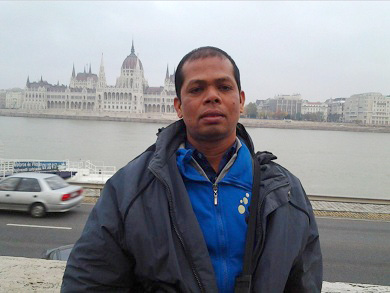Revealing Medan's Chinese Ethnic Identity in Advertising Grief at Harian Analisa Newspaper
Abstract
Keywords
Full Text:
PDFReferences
Agus, Bustanuddin 2006, Agama Dalam Kehidupan Manusia; Pengantar Antropologi Agama, Jakarta: Raja Grafindo Persada.
Arifin, M.T. 1998. Pengakuan Persepsi Terhadap WNI Etnis Tionghoa. dalam Alfian Hamzah(ed.), Kapok Jadi Nonpri: Warga Tionghoa Mencari Keadilan. Bandung: Penerbit Zaman Wacana Mulia, 64-75.
Bachrun, R dan Hartanto, B. 2000. Krisis Identitas Diri Pada Kelompok Minoritas Tionghoa. Dalam Wibowo, I (editor). Harga Yang Harus Dibayar. Sketsa Pergulatan Etnis Tionghoa di Indonesia. Jakarta: Gramedia Pustaka Utama dan Pusat Studi Tionghoa.
Barth, Frederick. 1988. Kelompok Etnis dan Batasannya (terj). Jakarta: UI Press.
Chang, Queeny. 2005. Memories of A Nonya: Kisah Hidup dan Cinta Seorang Wanita Tionghoa Terkaya di Medan. Jakarta; MM Corp.
Chusman, Jennifer & Wang Gungwu. 1991. Perubahan Identitas Orang China di Asia Tenggara. Jakarta: Grafiti
Devi, Aulia Vista. 2010. Analisis Wacana Ucapan Terima Kasih dalam Harian Kompas. Skripsi. Universitas Muhamadiyah Surakarta.
Effendy, Onong Uchjana. 1993. Dinamika Komunikasi. Bandung: PT. Remaja Rosdakarya.
Hadiluwih, Subanindyo. 1994. Studi Tentang Masalah Tionghoa di Indonesia: Studi Kasus di Medan. Medan: Dian-Doddy.
Ham, Ong Hok. 2005. Riwayat Tionghoa Peranakan di Jawa, Jakarta: Komunitas Bambu.
____________. 2008. Anti Tionghoa, Kapitalisme Tionghoa dan Anti Tionghoa. Jakarta: Komunitas Bambu.
http://id.wikipedia.org/wiki/Kota_Medan
Haviland, William A, Antropologi jilid I dan II Alih bahasa RG Soekardjo, Jakarta : PT. Gramedia, 1970
Ihromi, T.O. 1990. Pokok-pokok Antropologi Budaya. Jakarta: Yayasan Obor Indonesia.
Jenks, Christ. 2008. Kebudayaan. Medan: Bina Media Perintis.
Koentjaraningrat, 1985. Beberapa Pokok Antropologi Sosial. Jakarta: Dian Rakyat.
______________, 1987. Sejarah Teori Antropologi I Jakarta Universitas Indonesia
______________, 2004. Kebudayaan Mentalitas dan Pembangunan. Jakarta Gramedia Pustaka Utama
Lan, T, J. 2000. Susahnya Jadi Orang Tionghoa. Ke-Tionghoa-an Sebagai Konstruksi Sosial. Dalam Wibowo, I (editor). Harga Yang Harus Dibayar. Sketsa Pergulatan Etnis Tionghoa di Indonesia. Jakarta: Gramedia Pustaka Utama dan Pusat Studi Tionghoa.
Mastoyo. 2007. Pengantar Metode Penelitian Bahasa. Yogyakarta:Carasvatibooks.
Moleong, Lexy. 2006. Metodologi Penelitian Kualitatif ed. Revisi. Bandung: PT Remaja Rosdakarya
M, Hidajat Z. 1984. Masyarakat dan Kebudayaan Tionghoa di Indonesia. Bandung: Tarsito.
Moleong, Lexy, 2006, Metodologi Penelitian Kualitatif cet 22, Bandung, Remaja Rosda Karya.
Mulyana, Dedy. 2000, Ilmu Komunikasi, Pengantar, Bandung: Remaja. Rosadakarya.
Nugraha, Adi. Membaca Kepribadian Orang-orang China. Yogyakarta: Garasi, 2008.
Pelly, Usman. Urbanisasi dan Adaptasi, Peranan Misi Budaya Minangkabau dan Mandailing. Jakarta: LP3ES, 1998, hal. 91.
Rakhmat, Jalaludin, 1988, Psikologi Komunikasi, CV. Remaja Karya, Bandung.
Suharso, Drs Dkk. 2009. Kamus Besar Bahasa Indonesia Edisi Lux. Semarang:CV Widya Karya.
Spradley, James P. 1997. Metode Etnografi. Yogya: Tiara Wacana.
Suparlan, Parsudi, ed. Manusia, Kebudayaan dan Lingkunganya. Jakarta: Rajawali. 1984
Suranto, AW, 2011, Komunikasi Interpersonal, Yogyakarta: Graha Ilmu.
Suryadinata, Leo. 1994. Politik Tionghoa Peranakan di Indonesia. Jakarta: Sinar Harapan.
DOI: https://doi.org/10.33258/birci.v1i4.96
Article Metrics
Abstract view : 290 timesPDF - 286 times
Refbacks
- There are currently no refbacks.

This work is licensed under a Creative Commons Attribution-ShareAlike 4.0 International License.

This work is licensed under a Creative Commons Attribution-ShareAlike 4.0 International License.

_.gif)

















_.gif)



